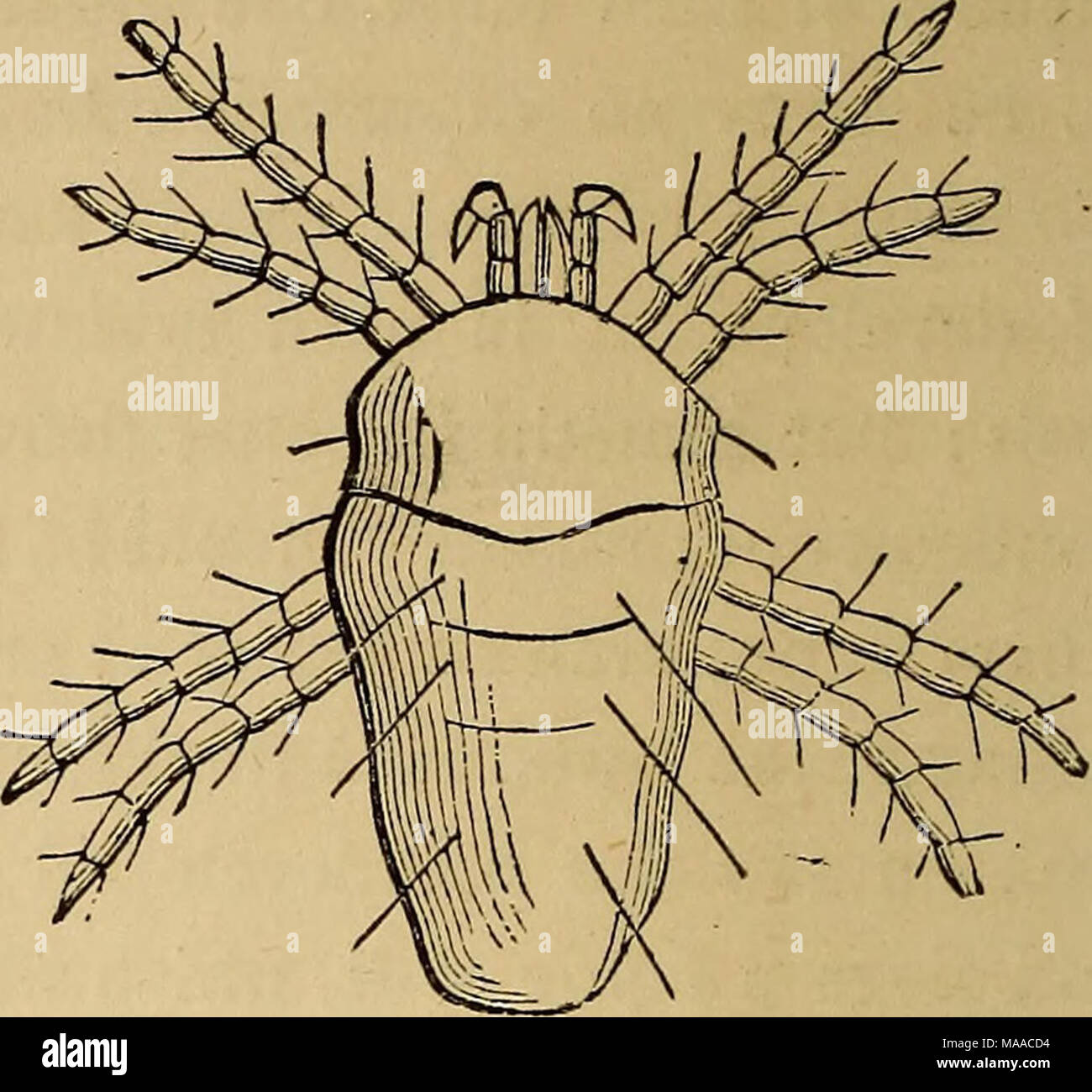. Economic entomology . Phytoptus, from Erineum rubigo on lime tree leaves (Flexipalpus tiliae of Scheuten). Copied from his figure. Badly drawn. Tetranychus tiliae, erroneous'y sup- posed by Scheuten to be the perfect form of ditto (Flexipalpus tiliae of Scheuten). Copied from his figure. is constantly a round clear space, which also occurs in the same spot in the mite : then follow irregular roundings which, says he, are certainly nutritive organs. But merely to assert this is no proof, and the objections to Dujardin's statement are obviously weak. He objects that it could not be transparent

Image details
Contributor:
The Bookworm Collection / Alamy Stock PhotoImage ID:
MAACD4File size:
14.3 MB (482.3 KB Compressed download)Releases:
Model - no | Property - noDo I need a release?Dimensions:
2317 x 2158 px | 39.2 x 36.5 cm | 15.4 x 14.4 inches | 150dpiMore information:
This image is a public domain image, which means either that copyright has expired in the image or the copyright holder has waived their copyright. Alamy charges you a fee for access to the high resolution copy of the image.
This image could have imperfections as it’s either historical or reportage.
. Economic entomology . Phytoptus, from Erineum rubigo on lime tree leaves (Flexipalpus tiliae of Scheuten). Copied from his figure. Badly drawn. Tetranychus tiliae, erroneous'y sup- posed by Scheuten to be the perfect form of ditto (Flexipalpus tiliae of Scheuten). Copied from his figure. is constantly a round clear space, which also occurs in the same spot in the mite : then follow irregular roundings which, says he, are certainly nutritive organs. But merely to assert this is no proof, and the objections to Dujardin's statement are obviously weak. He objects that it could not be transparent, because Dujardin has described it as white and striated; and yet he him- self immediately, not only confirms the transparency, but describes the very bodies that Dujardin saw. All who have seen these creatures know that they are semi-transparent, and that you may see the interior, as it were, through a milky glass. It is not irrelevant to the question to add that M. Scheuten describes and figures another Gamasus under the name of Sannio rubrioculus, both in what he calls its young and mature stages, and that both the young and the old are furnished with eight legs. From this and some other minor indications, it rather seems to us that M. Scheuten had only taken up the study of the Acaridae incidentally, and that his statements can hardly be accepted as right interpretations of what he saw, without con- firmation. Next, in 1864, Von Landois described from a new species